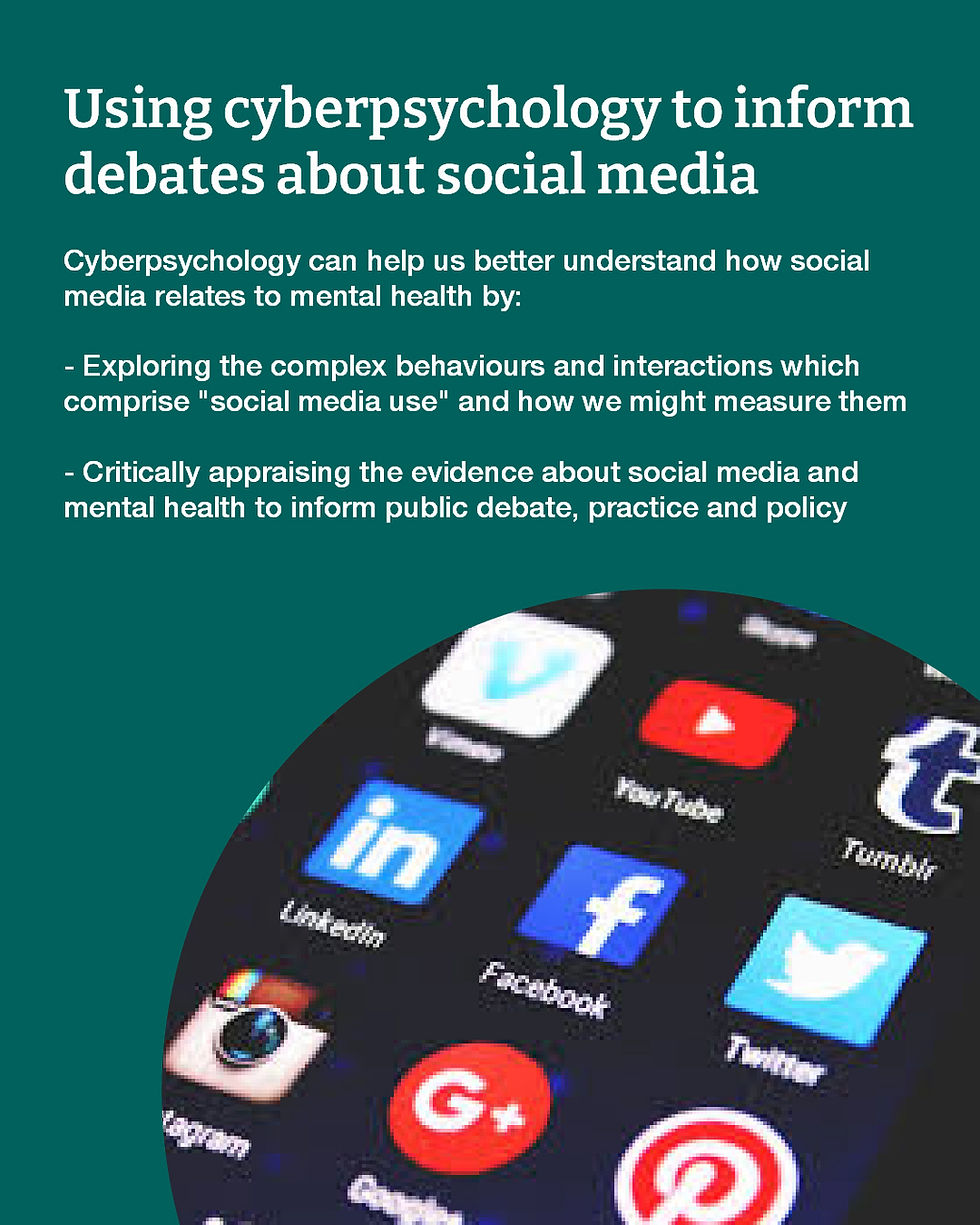Applying theories from cyberpsychology to digital innovation
- LindaKKaye

- Jan 15
- 3 min read
Digital innovation can mean different things in different contexts and have unique challenges within these, but broadly it can be focused on incorporating digital technology into traditionally non-digital areas. Within the health and social care sector, this might be about introducing digital health technologies such as MedTech into professional practice, within corporate contexts, this might include rolling out new digital systems for employee or HR management, and within retail or commercial sectors, this might be introducing new digital services to overhaul client and consumer relations.
Irrespective of the specific sector or context in which digital innovation is taking place, understanding organisational digital readiness remains a critical factor. For example, a significant barrier to digital innovation within organisations can be a lack of motivation, or indeed perceived capabilities both at an individual and organisational level.
Within the academic literature, understanding factors which relate to “readiness” of using technology is often discussed in the context of technology acceptance. This generally refers to factors which determine the likelihood of individuals accepting and therefore, using certain technologies. A widely-used framework is the ‘Technology Acceptance Model’ (TAM; Marangunić & Granić, 2015), which has been developed and extended considerably over the last few decades. The TAM is an example of what is referred to as a socio-cognitive model. Broadly, this includes social factors (e.g., peer attitudes) as well as cognitive or individual factors (e.g., perceptions of usability) which can collectively explain the acceptance of a particular technology in a given context (Davis, et al., 1989; Venkatesh et al., 2003). Users’ perceptions of these determine their intentions to use and subsequently continue to use a given technology (Davis et al., 1989).
Although the TAM has been widely used in academic and business pursuits, it is limited by its tendency to simplify complex issues. However, more recent models overcome these limitations. For example, the Technology Integration Model’ (TIM; Shaw et al., 2018) is helpful as it not only unifies many of the socio-cognitive factors of the TAM, but also includes key factors missing from current technology adoption discourse such as individual user differences. These can include: user personality and the extent to which a given technology can extend a person’s capabilities (i.e., technological extension/subtraction; Shaw et al., 2018). This advances our abilities to measure the range of important user-centred factors and is well placed to be applied to evaluate the range of personal, situational motivational and cognitive barriers and enablers of digital adoption and innovation.

Significant merits of using models such as the TIM is that they recognise user-centred agency within digital adoption and also can identify specific individual barriers which can then inform more targeted solutions. For example, using the components of the TIM as a digital readiness tool can provide an employee-level evaluation of drivers and barriers, which can help inform training or development needs and therefore support the organisation’s strategy objectives.
Some examples of how the TIM could be used
Industrial-organisational
Improving consistency in digital deployment across employees within organisationS
Improving employee capacity building and training in digital transformation through more personalised needs analysis
Product Marketing
Supporting technology product marketers to gain a competitive market advantage by using TIM as part of an onboarding service to support their product implementation service with business clients
Health and social care service user engagement/outcomes
Informing more personalised/targeted implementation strategies to how digital health technology products or services can be used with service users
Human factors/user experience/user-centred design
Supporting digital inclusion by understanding how characteristics of users (e.g., demographics, disabilities, early adopters, etc) might ensure more inclusive and accessible technology adoption and adaption
If you and your team are interested in learning more about the psychology behind technology adoption or wish to use TIM-informed tools to assess digital readiness in your organisation, we would love to hear from you!
References
Davis, F. D., Bagazzie, R. P., & Warshaw, P. R. (1989). User acceptance of computer technology: A comparison of two theoretical model authors. INFORMS, 35 (8), 982-1003
Marangunic, N., & Granic, A. (2015). Technology acceptance model: a literature review from 1986 to 2013. Universal Access in the Information Society, 14 (1), 81-95. https://doi.org/10.1007/s10209-014-0348-1
Shaw, H., Ellis, D. A., & Ziegler, F. V. (2018). The Technology Integration Model (TIM): Predicting the continued use of technology. Computers in Human Behavior, 83, 204-–214. https://doi.org/10.1016/j.chb.2018.02.001
Venkatesh, V., Morris, M. G., Davis, G. B., & Davis, F. D. (2003). User Acceptance of Information Technology: Toward a Unified View. MIS Quarterly, 27(3), 425–478. https://doi.org/10.2307/30036540



Comments